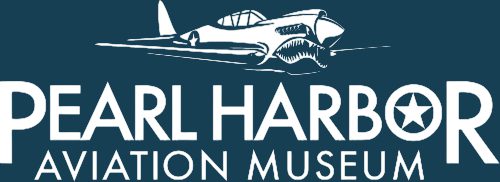Seats of honor
Choose Your Seat of Honor!
Select & Name Your Exclusive Seat of Honor In Our Museum Theater
We invite you to “take your seat” and join us in our effort to honor our past and inspire our future.
Your lasting tribute will help sustain our Museum and fulfill our mission. Funds raised from our Seats of Honor campaign will be endowed, supporting Museum programs, education, exhibits and the stewardship of this historic site for years to come.
There are only 200 seats in the Pearl Harbor Aviation Museum theater. These seats have never been available for naming. You can help us continue and grow our impact by sharing your tribute, placing your personally inscribed plaque on the back of the seat of honor you select.
Gold Seat | $5000
Gold Finish Plaque with up to 3 lines of inscription
(limit of 20 characters per line)
silver Seat | $2500
Silver Finish Plaque with up to 3 lines of inscription
(limit of 20 characters per line)
bronze Seat | $1000
Bronze Finish Plaque with up to 3 lines of inscription
(limit of 20 characters per line)

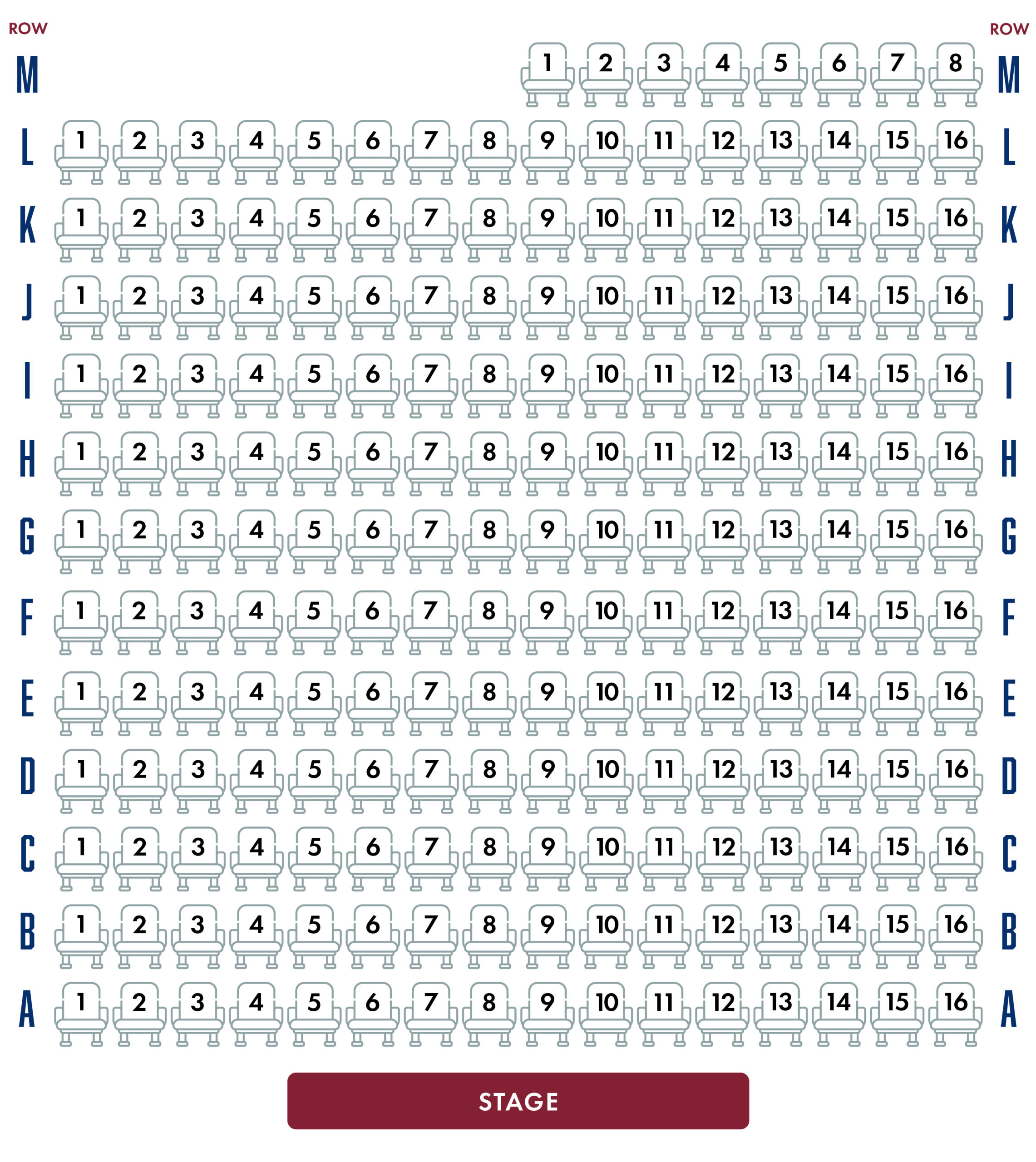
SEAT L-1
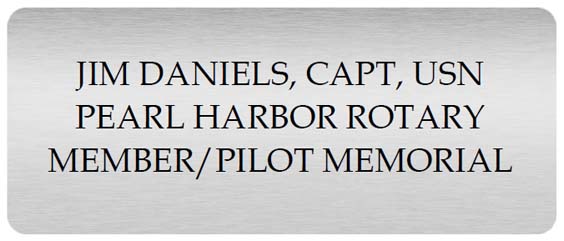
RESERVED
Donor: Pearl Harbor Rotary Club
SEAT M-1
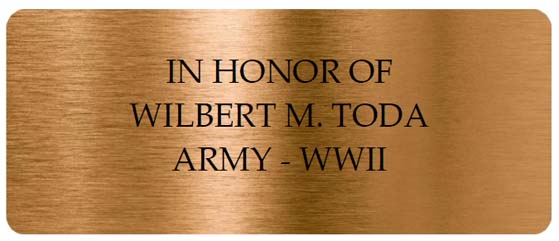
RESERVED
Donor: C Toda
SEAT M-3
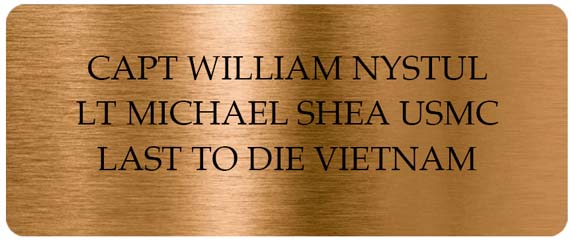
RESERVED
Donor: Mr. Jay Dunn
SEAT M-4

RESERVED
Donor: Mr. Lee Collins & Mr. Jay Dunn
SEAT M-5
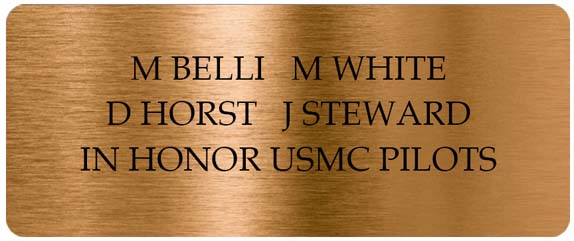
RESERVED
Donor: Mr. Jay Dunn
SEAT M-7
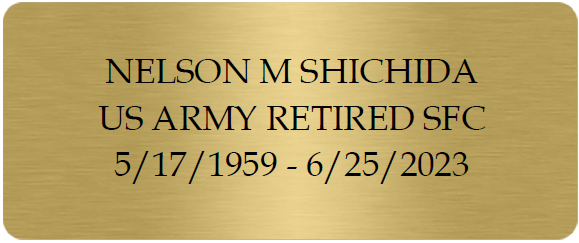
RESERVED
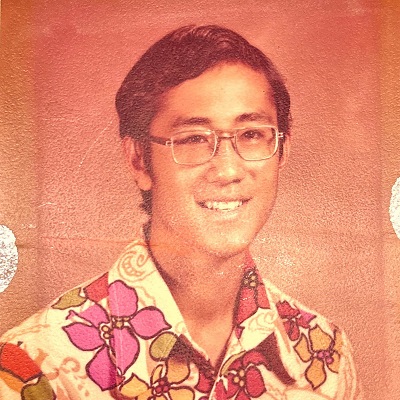
Nelson Masao Shichida, 64, of Columbus, Ohio, passed away on June 25, 2023 after his battle with cancer.
Nelson was born on May 17, 1959 to Harry and Mary Shichida, in Honolulu, Hawaii. He was a 4th generation Japanese American and his grand father Robert H Shichida was his mentor who told him stories about WW2 and Pearl Harbor.
After graduating from Kamehameha Schools in 1977, he joined the Army and had a distinguished 20 year career, retiring with the rank of E-7 with honors.
In 1980, Nelson met Kimberly in Seoul, Korea. They remained married and faithful for 42 years and have a son, Richard.
While in the Army, he attended college, and earned his Masters degree in Business Administration. After retiring from the Army, he would go on to have another successful 16 year career in business management. This eventually lead to opening a family business, which is still running to this day because of the strong foundation that he put in place.
He enjoyed spending his free time relaxing while watching K-Drama and had plans to go back for his doctorate after he officially retired at 65.
Nelson was a loving husband, father, brother, and son that fought his battle with cancer all the way to the end.
Donor: Mrs Kimberly Shichida
SEAT M-8
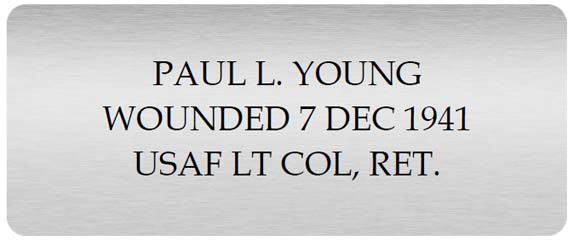
RESERVED
Donor: The Sue and Young Families, California, Hawaii and Japan
SEAT L-8
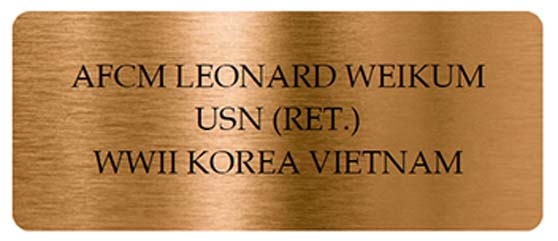
RESERVED
Donor: Anonymous
SEAT K-1
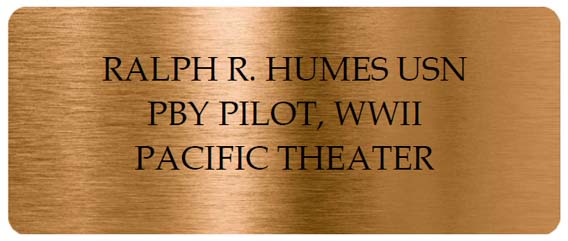
RESERVED
Donor: LTC Frederic Humes, USA (Ret)
SEAT J-1
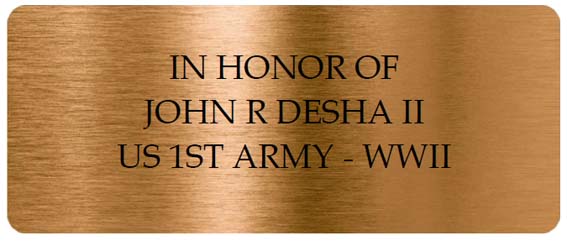
RESERVED
Donor: John and Constance Desha
SEAT J-7

RESERVED
Donor: Catherine Shepherd
SEAT J-8
RESERVED
SEAT J-9
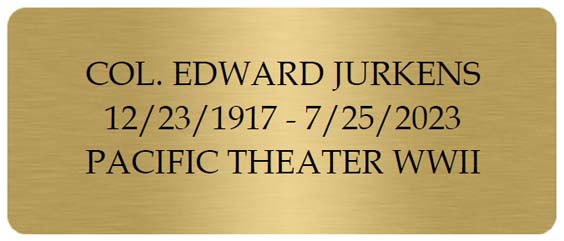
RESERVED
Donor: The Estate, Family, and Friends of Col. E. A. Jurkens
SEAT J-13
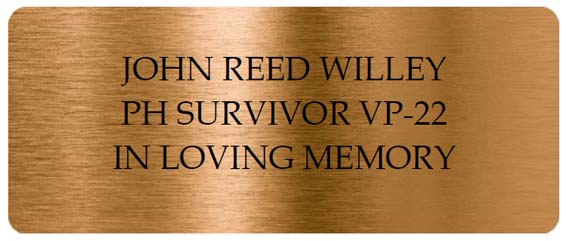
RESERVED
Donor: Sue Willey and family
SEAT J-15
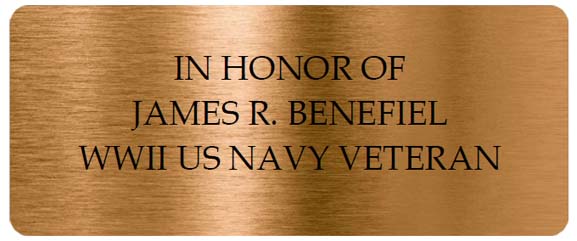
RESERVED
Donor: Ivan Ketterman, Patricia Benefiel Ketterman
SEAT J-16
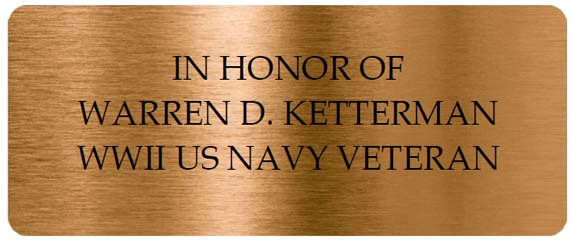
RESERVED
Donor: Ivan Ketterman, Patricia Benefiel Ketterman
SEAT I-1
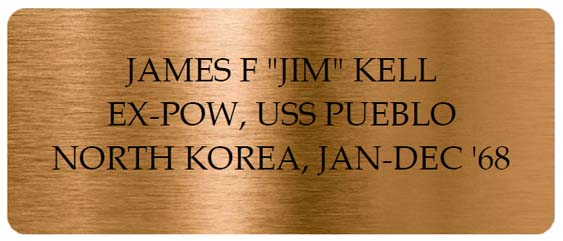
RESERVED
Donor: CPO James F Kell
SEAT I-9
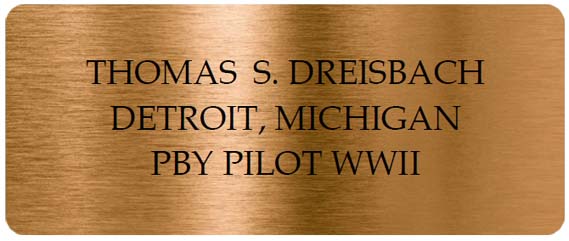
RESERVED
Thomas Dreisbach was born and raised in Detroit, Michigan, on 12-14-1924. He graduated from Cooley High School in 1942. He joined the Navy on his 17th birthday, becoming a Naval Aviator in 1945, flying PBY Catalina aircraft for the Air/Sea Rescue Squadron in the Aleutian Islands. After the war, Tom graduated from Purdue University in 1948, with a BS in Astronautical and Aeronautical Engineering, majoring in Aeronautical Transportation. After graduation, he worked as a private pilot and salesman at P.L. Grissom Chevrolet. He met and soon married Laurette Jean Elms on June 18, 1949. After serving as General Manager at Grissom's, in 1954, they moved to Dowagiac, Michigan to form Tom Dreisbach Chevrolet. From 1965 to 1996, he was owner of Dreisbach and Sons Cadillac in Detroit, while raising their family in Bloomfield Hills. After Tom eventually retired, he and Laurie moved to the Boca Raton, Florida area. Tom's affiliations include: active alumni and member of Sigma Chi Fraternity, Detroit City Airport Commissioner, president of the Detroit Area Cadillac Dealers Association, and Cadillac Master Dealer for 12 years. Memberships included the Michigan Auto Dealers Association, the Masonic Lodge, Christ Church Cranbrook, and Pine Lake Country Club. Tom's passion for life was evident throughout his 81 years. Many have been blessed by his integrity, devotion, and generosity. His love and pride for his family and God was paramount.
Source: The Detroit News on Feb. 12, 2006.
Donor: Mr. John Haines
SEAT I-16
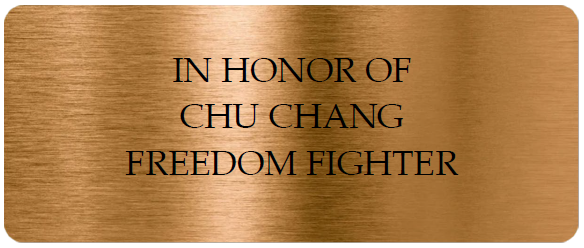
RESERVED
Donor: Mr. and Mrs. Greg and Patricia Moad
SEAT H-1

RESERVED
Donor: Bob & Lou Harris
SEAT H-7
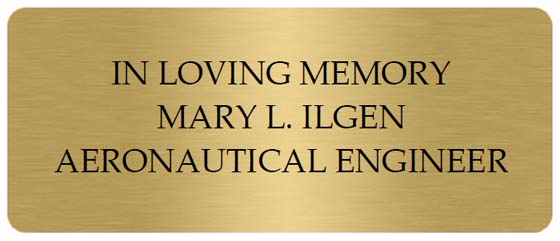
RESERVED
Donor: Captain Patricia A. Lucas, USN (Ret.)
SEAT H-8
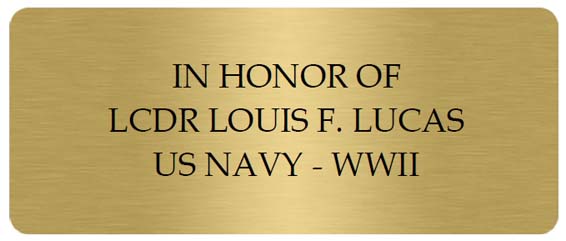
RESERVED
Donor: Captain Patricia A. Lucas, USN (Ret.)
SEAT H-9
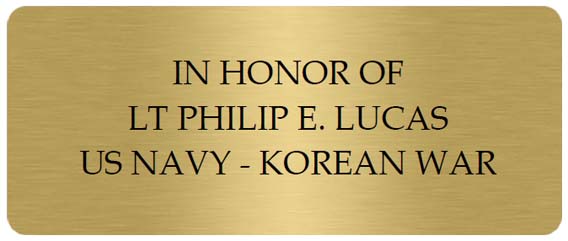
RESERVED
Donor: Captain Patricia A. Lucas, USN (Ret.)
SEAT H-15
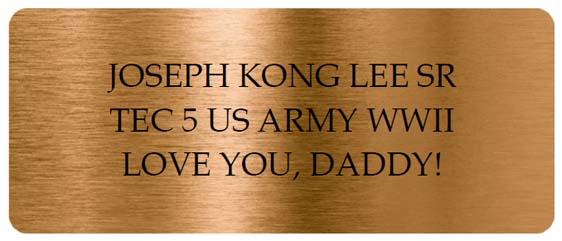
RESERVED
Donor: Charlotte H. Lee
SEAT H-16
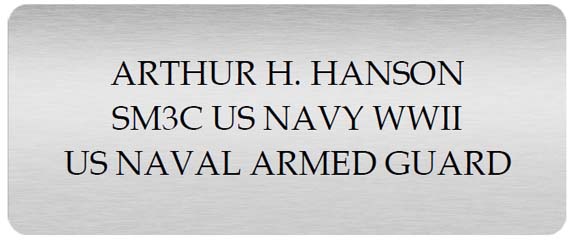
RESERVED
Donor: Ann Hanson
SEAT G-1
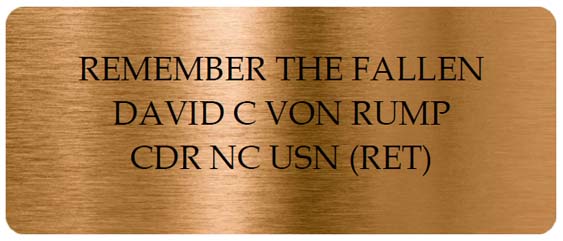
RESERVED
Donor: CDR David C Von Rump, USN (Ret.)
SEAT G-2
RESERVED
SEAT G-3
RESERVED
SEAT G-4
RESERVED
SEAT G-5
RESERVED
SEAT G-6
RESERVED
SEAT G-7

RESERVED
Donor: Wellman Family
SEAT G-8
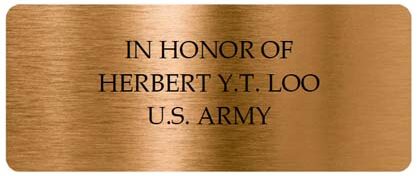
RESERVED
Donor: Drs. Lorren Loo & Paul Martin
SEAT G-9

RESERVED
Donor: Virginia Smith Alexander
SEAT G-10
RESERVED
SEAT G-11
RESERVED
SEAT G-12
RESERVED
SEAT G-13
RESERVED
SEAT G-14
RESERVED
SEAT G-15
RESERVED
SEAT G-16
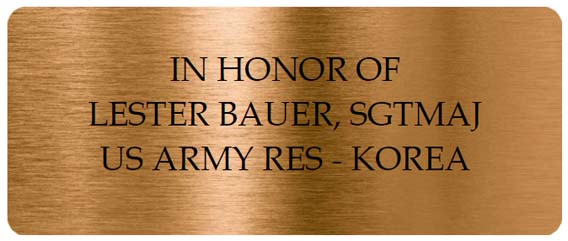
RESERVED
Donor: Mrs. and Mrs. Steven and Gail Bauer
SEAT F-1

RESERVED
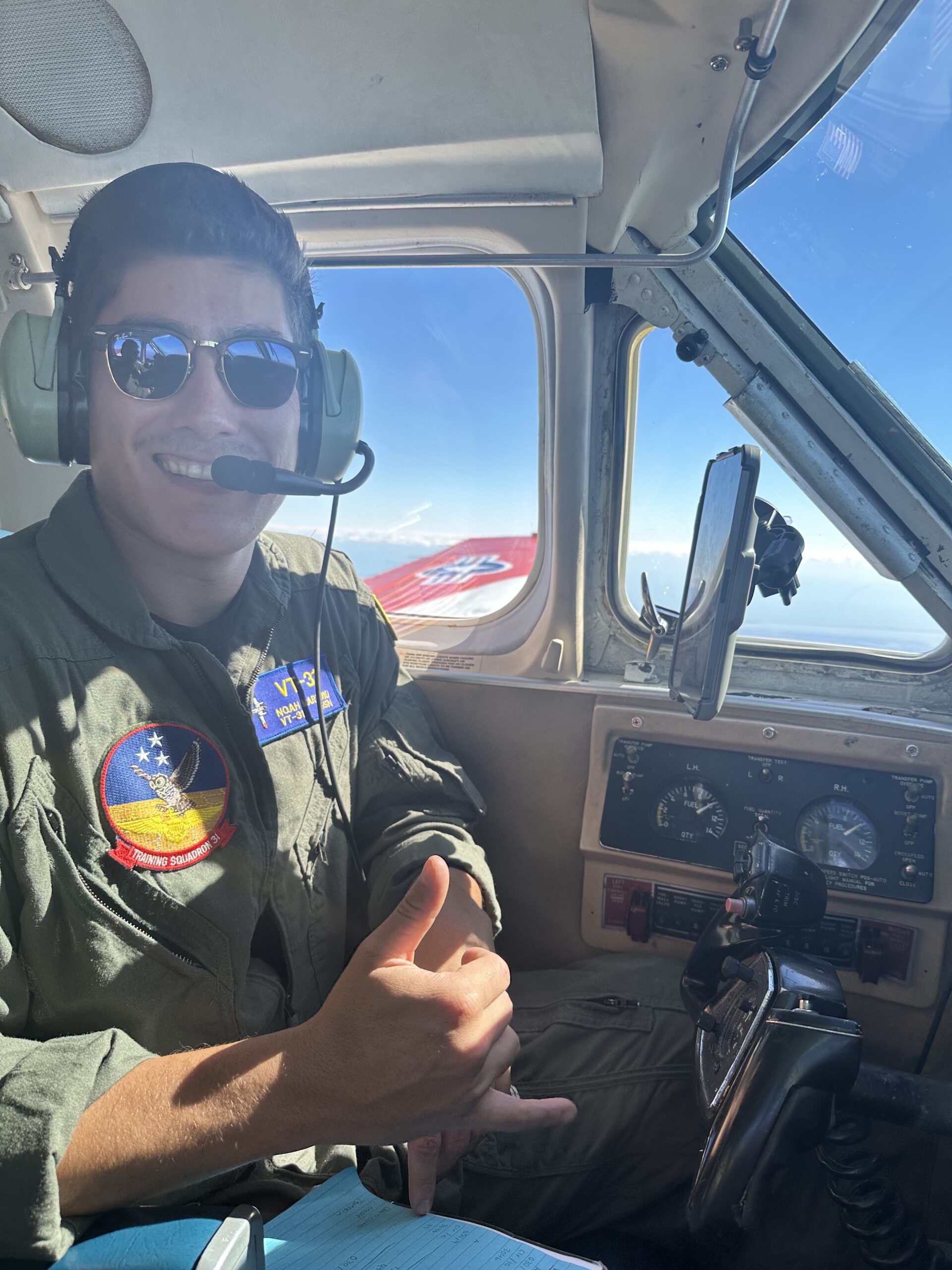
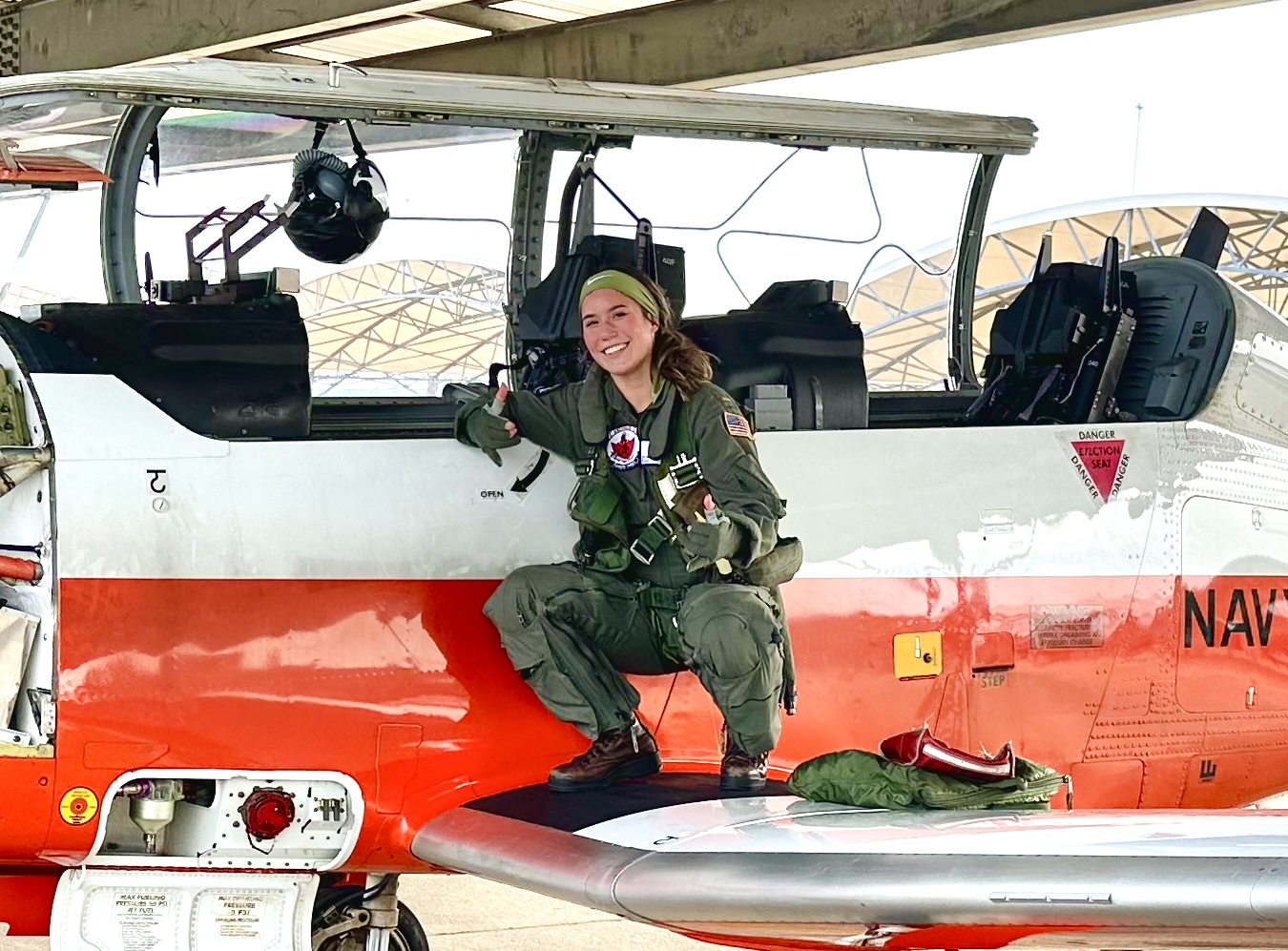
We are proud to honor and recognize the achievement and love of country by both our children as US Naval Aviators, both graduates of the University of San Diego, CA, Navy ROTC program. Noah will fly the Navy's P8 Poseidon and Suraya will fly the Navy's MH60's.
Donor: Johan & Luci Marzuki
SEAT F-2
RESERVED
SEAT F-3
RESERVED
SEAT F-4
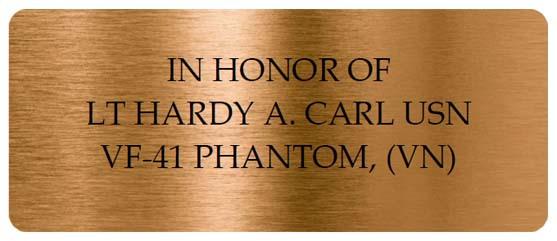
RESERVED
Donor: Maria Carl (Col, USAF, Ret) & Michael Rogers (CDR, USN Ret), Dan (Lt Col, USAF Ret) & Beth Carl, (Lt Col, USAF, Ret) Hardy & Lynne Carl
SEAT F-5
RESERVED
SEAT F-6
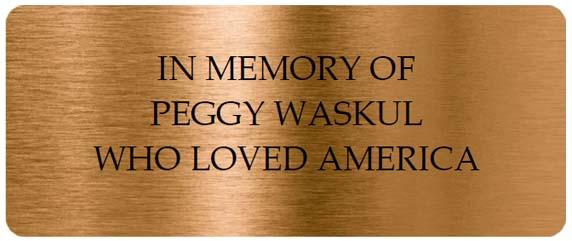
RESERVED
Donor: Greg and Diane Waskul
SEAT F-7

RESERVED
Donor: Greg and Diane Waskul
SEAT F-8
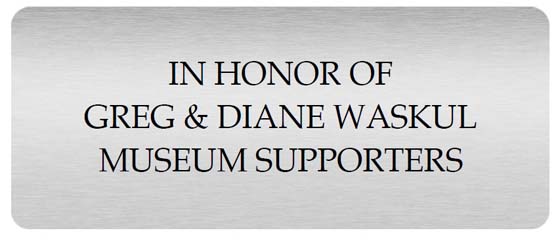
RESERVED
Donor: John and Elissa Lines
SEAT F-9
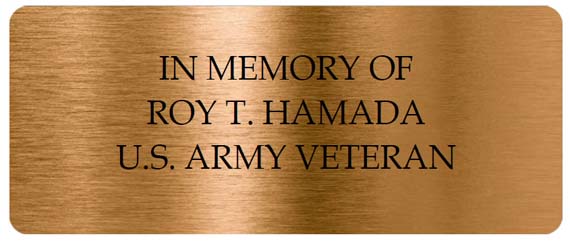
RESERVED
Donor: Greg and Diane Waskul
SEAT F-10
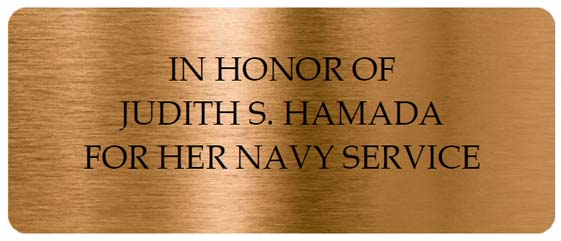
RESERVED
Donor: Greg and Diane Waskul
SEAT F-11

RESERVED
Donor: Greg and Diane Waskul
SEAT F-12

RESERVED
Donor: Greg and Diane Waskul
SEAT F-13
RESERVED
SEAT F-14
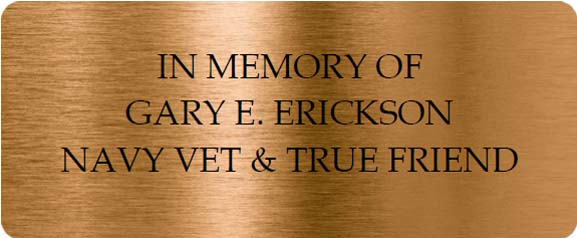
RESERVED
Donor: Greg and Diane Waskul
SEAT F-15
RESERVED
SEAT F-16
RESERVED
SEAT E-1
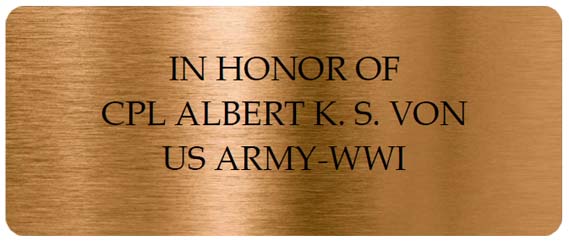
RESERVED
Donor: Gary & Donna Von
SEAT E-2
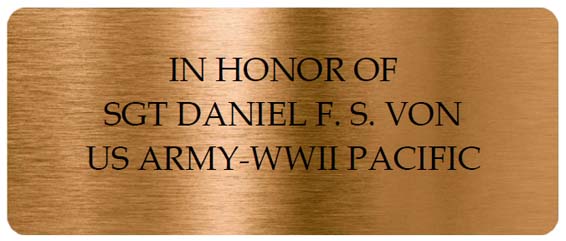
RESERVED
Donor: Gary & Donna Von
SEAT E-3

RESERVED
Donor: The Gary Von Family
SEAT E-7
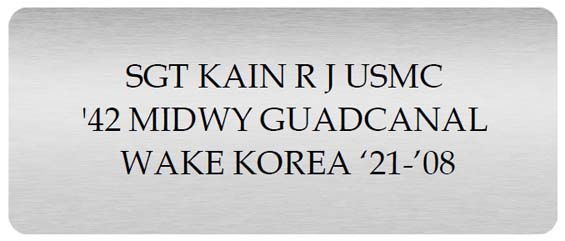
RESERVED
Donor: England & Kain Families. Cobb & Johnson Family.
SEAT E-8
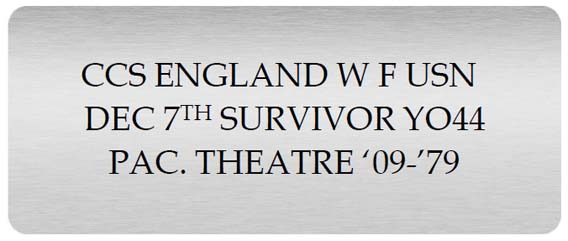
RESERVED
Donor: England & Kain Families. Cobb & Johnson Family.
SEAT E-9
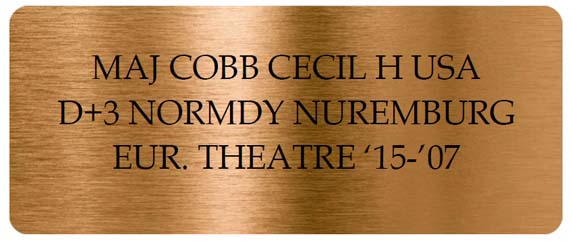
RESERVED
Donor: England & Kain Families. Cobb & Johnson Family.
SEAT E-11
RESERVED
SEAT E-15

RESERVED
Donor: Natalie Rauch
SEAT E-16
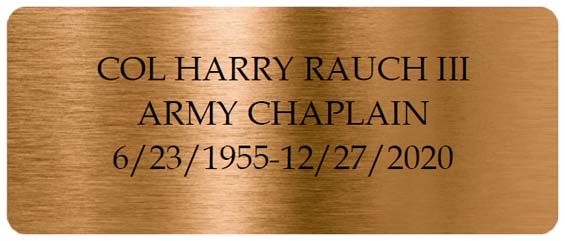
RESERVED
Donor: Natalie Rauch
SEAT D-1
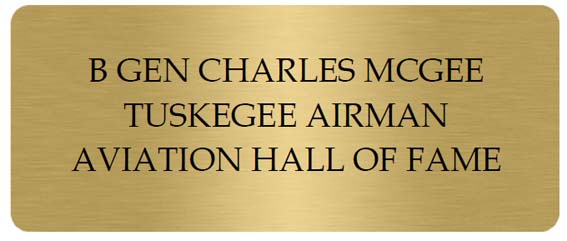
RESERVED
Donor: Mr. Ronald McGee
SEAT D-3
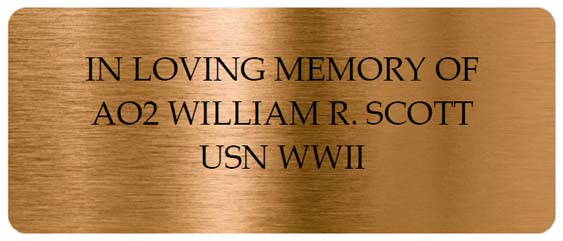
RESERVED
Donor: Mr. Steven and Marie Scott
SEAT D-7
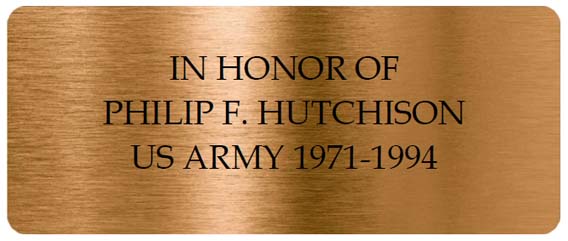
RESERVED
Donor: Philip and Linda Hutchison
SEAT D-8
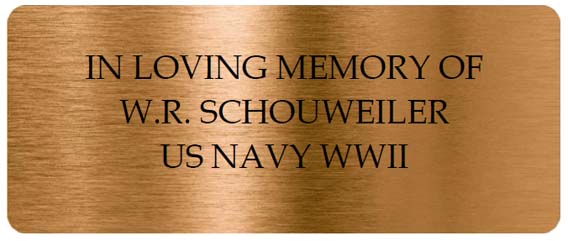
RESERVED
Donor: Philip and Linda Hutchison
SEAT D-9
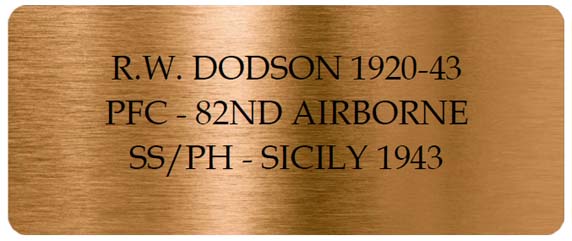
RESERVED
Donor: Philip and Linda Hutchison
SEAT D-11
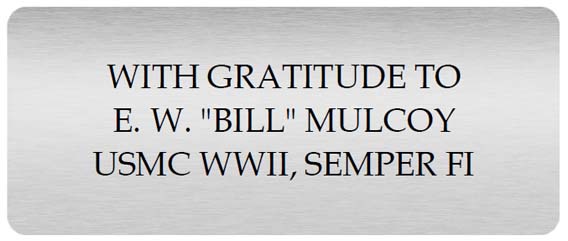
RESERVED
Edward William "Bill" Mulcoy was a WWII USMC veteran. He was a crew chief for SBD Dauntless dive bombers and was on Engebi Island in Enewetak Atoll during Operation Hailstone; his plane participated in the attacks.
Donor: Anonymous
SEAT D-16
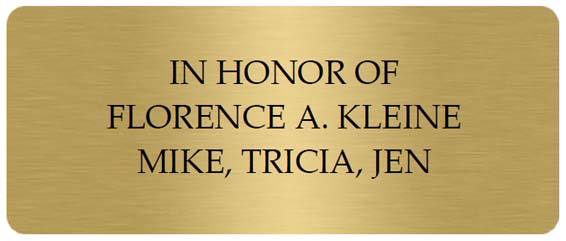
RESERVED
Donor: David Kleine Family
SEAT C-1
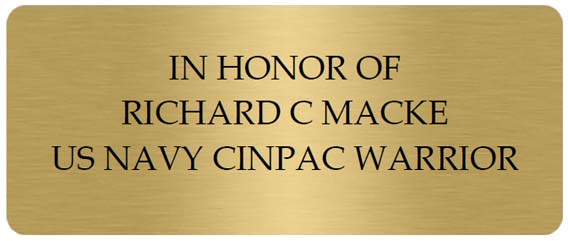
RESERVED
Donor: Susie Macke
SEAT C-2
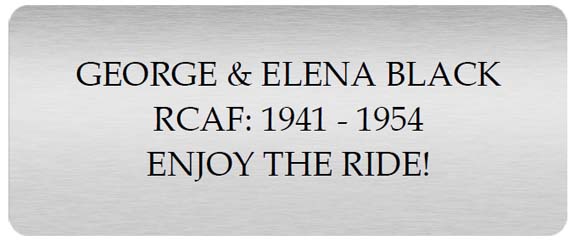
RESERVED
Donor: Todd and Stephanie Bedford
SEAT C-6
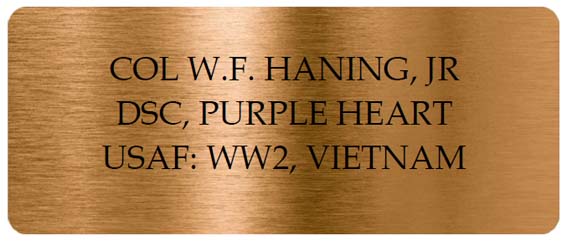
RESERVED
Donor: William F. Haning III, Capt, MC, USN (Ret.)
SEAT C-7
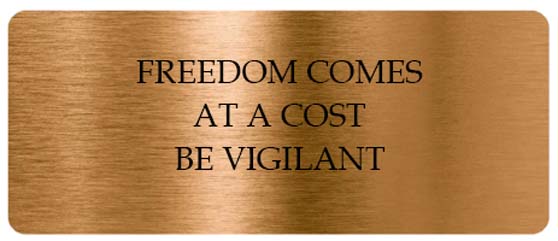
RESERVED
Donor: Mr. Edric Sakamoto
SEAT C-8

RESERVED
Donor: Mr. Edric Sakamoto
SEAT C-11

RESERVED
Donor: The Menke Family
SEAT C-12
RESERVED
SEAT C-13
RESERVED
SEAT C-16
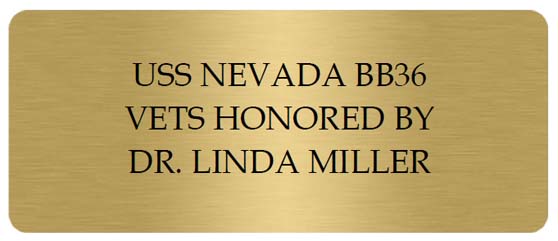
RESERVED
Donor: Dr. Linda Miller In Honor of USS Nevada Veterans.
SEAT B-1
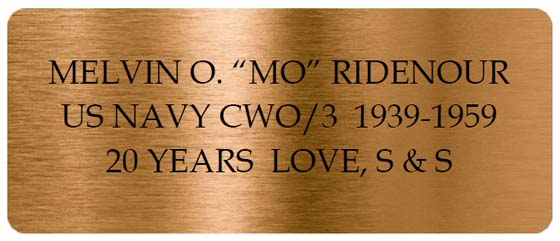
RESERVED
Donor: Shelley Weaver, Sheri Kahl
SEAT B-2
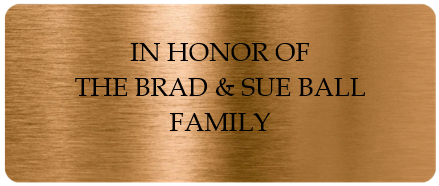
RESERVED
Donor: The Yeffa Family In honor of the Brad & Sue Ball Family
SEAT B-3

RESERVED
Donor: Mr. Steven Wall
SEAT B-4
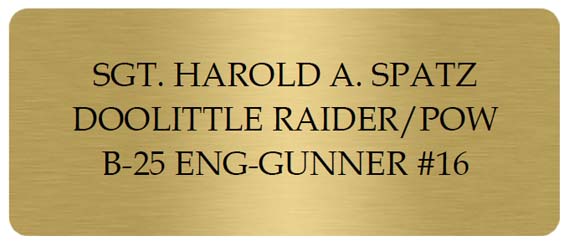
RESERVED

Harold “Skinny” Spatz, born, July 14, 1921, Lebo, Kansas. He was a normal kid growing up playing sports and did well in school.
He graduated from Lebo High School in June 1939 and entered military service on November 25, 1939, at Fort Riley, Kansas. Harold wanted to make the military his career. He received training as an aircraft mechanic in Glendale, California from September 1940 until March 1941. He volunteered for an unknown mission and was trained as an engineer – gunner.
Harold’s plane # 6, was the last to take off. Their targets in Nagoya, Japan were Matsushigeche Oil Storage, and Atsuta Factory producing aircraft, small arms, and tanks.
After completing their bombing and running short of fuel, plane 16 was one of the planes that crashed on the Chinese coast. They were captured by the Japanese along with three crew from Plane 6. Two of the crew in plane 6 died from injuries sustained in the crash and drowned.
Initially they were jailed and tortured for information. Confined and starved, they contracted dysentery and beriberi. Later they were sent to Tokyo for further interrogation and torture, then returned to Shanghai, where they were again imprisoned. They spent most of their time in solitary.
The Japanese determined they were not prisoners of war but war criminals. On October 14, 1942, the Japanese conducted a mock trial, and never told the charges against them, they were found guilty and sentenced to death. 2nd Lt. Dean Hallmark, 2nd Lt. William Farrow, and Sgt. Harold Spatz (just 21 years old) were selected for execution. The others commuted to life in prison.
The three men were executed in Shanghai's Public Cemetery No. 1, in accordance with Japanese military tradition: they were forced to their knees, blindfolded with their arms tied behind them, then shot simultaneously in the center of their foreheads.
Following their execution, their bodies were cremated, and boxes of their ashes were taken to the International Funeral Home in Shanghai where they remained until the end of the war.
The three Doolittle raiders were allowed to write a farewell note before their execution. They were to be given to the Red Cross, who in turn would deliver them to the families. However, the letters were never delivered to the Red Cross. After the war, in 1946, they were found and only then delivered to their relatives.
Harold’s short letter to his father read:
"I will say my last goodbye to you. My personal property consists of my clothes. If I have inherited anything since I became of age, I will give it to you. I want you to know that I love you - and God bless you."
The Japanese promised to also deliver their ashes to their families via the Red Cross. Again, Japan did not keep this promise. The ashes were recovered after the war, but under different names. Spatz's urn was found under E.L. Brister. They had renamed the urns to confuse the Americans.
SGT Spatz’s ashes were brought to Hawaii in 1946 and interred at Schofield Barracks, Mausoleum #2, Oahu, Hawaii. Later they were re-interred in the National Memorial Cemetery of the Pacific, Hawaii, October 10, 1949. The cemetery is also known as Punchbowl Cemetery.
Donor: Dr. Janice A. Nielsen
SEAT B-5

RESERVED
SEAT B-6

RESERVED
Donor: Col. Robert P. “Rob” and Marcy Moore, USAF-Ret In Memory of Debra Lynn Stanfield Moore, wife of Robert Moore.
SEAT B-7
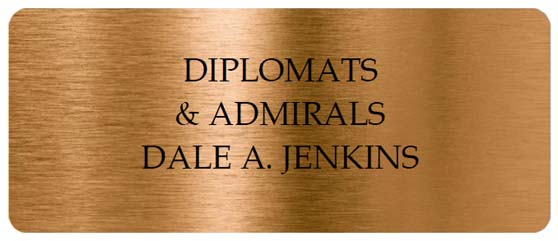
RESERVED
Donor: Dale A. Jenkins
SEAT B-8
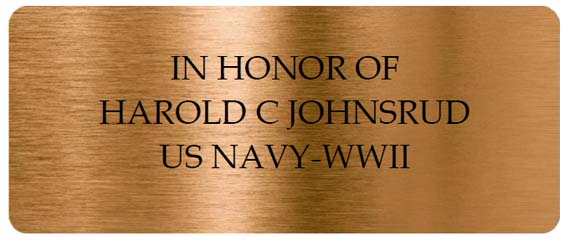
RESERVED
Donor: Kling Foundation
SEAT B-9
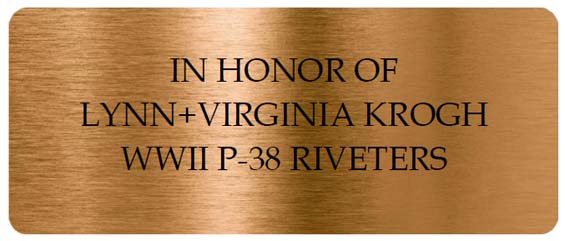
RESERVED
Donor: Lynn M. Krogh
SEAT B-10
RESERVED
SEAT B-11
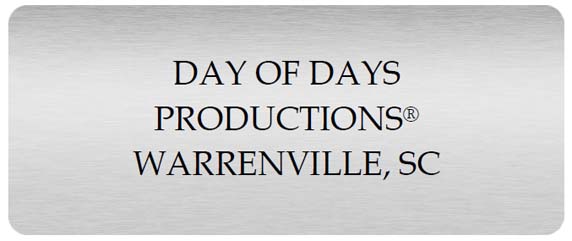
RESERVED
Donor: Joel Johnson, Day of Days Productions
SEAT B-12
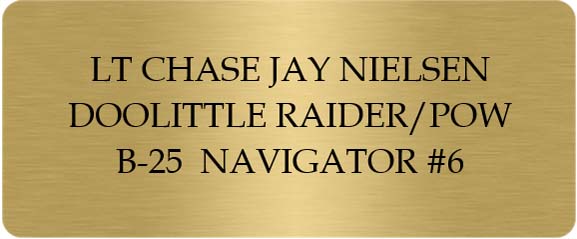
RESERVED

Chase Jay Nielsen was born in January 1917 in Hyrum, Utah. One of six children. He was of Danish, Swedish, Prussian and Welsh decent. After graduating from high school, he went to Utah State University where he got a Bachelor of Science degree in civil engineering in 1939.
That August enlisted in the U.S. Army Air Corps as a flying cadet. He graduated from Navigator School in June 1941 and was assigned to 17th Bomb Group at McChord Field in Washington, flying the B-25 Mitchell bomber. He flew anti-submarine patrols off the west coast after December 7th until February 1942. He then volunteered for a “secret mission.”
He was assigned as the Navigator to plane six, nicked named “The Green Hornet.” After take-off from the USS Hornet, Nielsen oversaw navigation through sever weather to get the crew to Japan. Finding the coastline, they worked their way to Tokyo. They successfully completed their mission, bombing a steel mill in the northern part of Tokyo. Like all the planes on the raid, they ran low on fuel due to an early launch from fear of being spotted. They ditched at sea off the coast of Wenzhou, China. Two of the crew (bombardier and gunner) drowned. The pilot, co-pilot and Lt Chase Nielsen swam four hours in the dark and choppy waves to shore. They were captured by the Japanese and held prisoner along with the five crew from plane 16 in Shanghai. They were severely tortured, interrogated, starved, and held in solitary confinement. Considered war criminals and not POWs they were tried, convicted, and sentenced to death after a mock trial. Three of them were executed and the others were given life in prison. They were moved to Japan for more cruel integration and then back to a Chinese prison. Chase was the only one to survive from plane 6 as his pilot was executed, and the co-pilot died of malnutrition and beriberi. They were rescued in August of 1945 by the Office of Strategic Services para-rescue team. Lt Nielsen was 6’1” and at the time of rescue in weighed 109 pounds. Chase returned in January 1946 to testify in the war trails against his Japanese captors.
He stayed in the Air Force until 1961, achieving more than 10,000 hours flying in B-29s. B-50s, B-36s, and B-52s. His longest flight was 26 hours non-stop without refueling from Okinawa, Japan to Walker AFB, NM. After retiring from the AF, he was an industrial engineer with the Ogden Air Logistics Center at Hill Air Force Base, UT, retiring in 1981.
Chase Nielsen was married and had three children. He remarried after his first wife passed away and had several grand and great-grandchildren. He died at home in Brigham City, Utah, in March 2007, at the age of 90. He was buried at the Hyrum City Cemetery in Hyrum, Utah.
Donor: Dr. Janice A. Nielsen
SEAT B-13
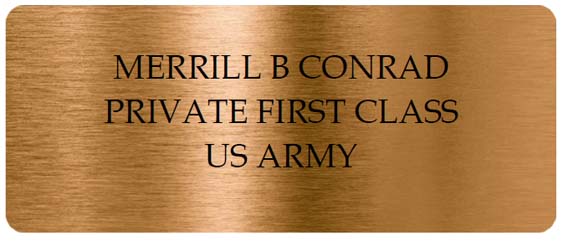
RESERVED
Donor: The Conrad Family
SEAT B-14

RESERVED
Donor: Anonymous
SEAT B-15
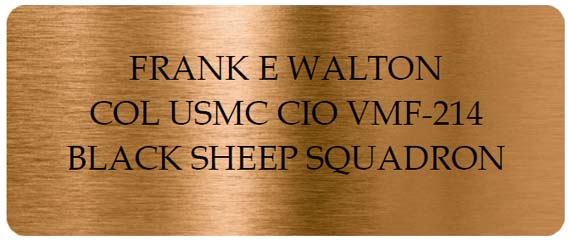
RESERVED
Donor: Anonymous
SEAT B-16

RESERVED
Donor: Dr. Rhoda Elaine Weiss
SEAT A-1
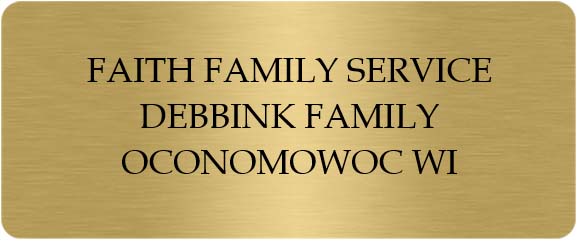
RESERVED
Donor: VADM Dirk & Teresa Debbink USNR (Ret.)
SEAT A-2

RESERVED
Donor: Pearl Harbor Aviation Museum Board of Directors
SEAT A-3
RESERVED
SEAT A-4
RESERVED
SEAT A-5
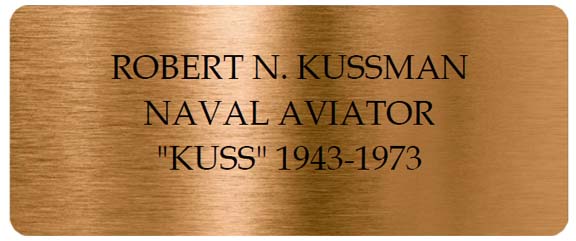
RESERVED
Donor: Brad & Dana VanSlyke
SEAT A-6
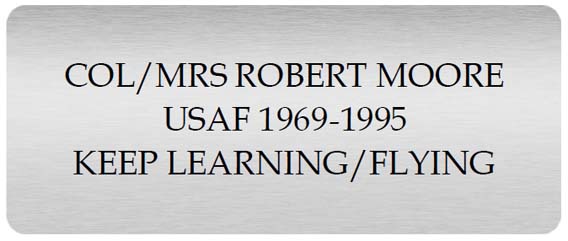
RESERVED
Donor: Col. Robert P. “Rob” and Marcy Moore, USAF-Ret
SEAT A-7
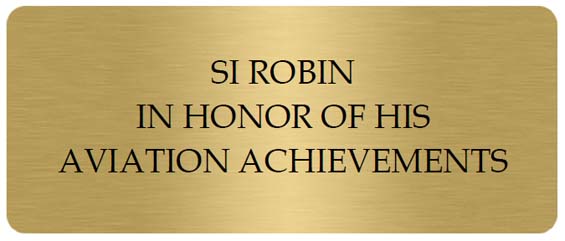
RESERVED
SEAT A-8
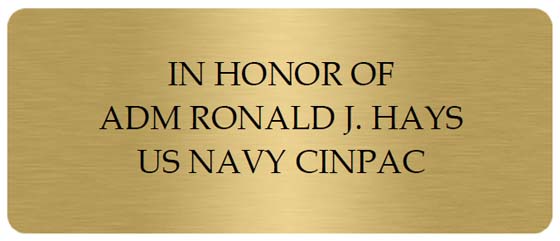
RESERVED
SEAT A-9
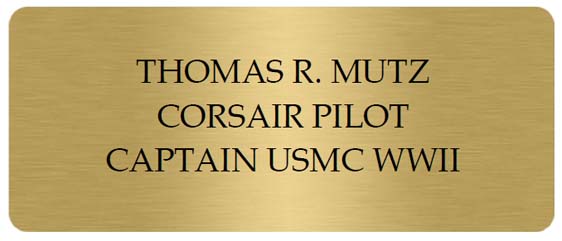
RESERVED

Captain Thomas R. Mutz, USMC, was born on Sept 29, 1920, in Edinburgh, Indiana. He attended Indiana University (IU). While there, he took a naval training course that got him assigned to the USS Arkansas for three months, primarily doing sea duty in the Caribbean. Tom returned to IU, got his pilot’s license, and then applied to the Naval Officer’s Training School at Northwestern University. Tom was accepted and 90 days later he graduated as an Ensign on December 5, 1941. On December 8, he received orders to Pensacola and arrived there December 10, where he applied for admissions in the Marine Air Corps. Tom was accepted and sent to Camp Kearney in California. He trained in the new F4U Corsair, a brand-new fighter plane that was manufactured by Chance Vought Corporation, that could travel over 400 miles an hour. In 1941, 400 miles an hour was symbolic of supersonic speed today.
Tom was assigned to VMF 124 Squadron as a replacement for a pilot that had been killed in training. The VMF 124 was the first squadron flying in combat with the F4U. The squadron sailed from San Diego on January 8th, 1943, on the USS Lurline. They took the long southerly route to avoid Japanese submarines and made port at New Caledonia on January 22nd. This squadron transferred to a troop transport ship, the USS Hunter Liggett, and sailed to Efate and anchored there allowing VMF 124 to rendezvous with the F4U planes. The squadron spent 2 weeks preparing for combat while based at Guadalcanal. Tom was in Flight “D” led by Capt. (William) Earl Crowe (of American Indian heritage). Tom was his wingman. By February 13th all planes and pilots were at Guadalcanal and began fighting immediately. The Battle of Guadalcanal, which Admiral King called “the fiercest naval battle ever fought” had begun on November 13,1942, and in February 1943, Tom was in the thick of things.
On February 13, 1943, VMF 124 was sent on their first bomber escort mission taking B-24s to bomb Kahili, a Japanese airfield on Bougainville Island that was 300 miles up “The Slot” from Guadalcanal. “The Slot” was the nickname for the New Georgia Strait. This was the first time the Japanese had seen an F4U. When the plane drove the wing root inlets made a piercing whistle sound and the Japanese pilots quickly nicknamed the plane “Whistling Death.” The F4U was known by that name from then on. In their first combat encounters flying from Guadalcanal the VMF 124 Pilots found the skills of the Japanese pilots to be very impressive. Tom and the other pilots rapidly learned the enemy’s strengths and tactics. The main weakness of the Japanese pilots was they seldom conducted coordinated attacks.
After World War II Japanese military leaders wrote a book titled “The Divine Wind.” One quote read, “Our naval air force boasted absolute mastery of the air in all theaters of battle until the middle of 1943 when the Zeros were found to be inferior to the new F4U from the United States. As a direct result our Air Force suddenly found themselves fighting against impossible odds.” The Japanese retreat from the Solomons, the Gilberts and Marshall Islands all resulted from the inability of the Japanese air strength to hold its own against the enemy.
On their first tour VMF 124 opened Henderson’s Fighter One airstrip and were living in tents with no recreation and very little food. “Washing Machine Charlie” was still making harassing bombing raids. All personnel had to dig their own foxholes. Tom got tired of running to his foxhole all the time and one night decided to remain in his tent. A shell hit nearby and blew the tent over. Tom said he was sure he broke the Olympic track records getting to the foxhole. It was in February that Tom was promoted to 1st Lieutenant. One of the tactics, VMF 124 pilots learned was how to escape a Zero when it got behind you. When a Zero got on your tail, you dove straight down at extremely high speed, and when attaining 250 knots, execute a hard right 180-degree roll and pull through. The Zero could not follow a plane employing that maneuver. Hopefully a US pilot would end up above the Japanese plane. The F4U would stack up to 30,000 feet on bombing escort missions and the bombers would be at 20,000 feet.
On June 5th, while escorting SBDs and TBFs planes from the Russell Islands to Kahili, Tom’s group was attacked by 8 Zeros near Kolombangara. One Zero came down and passed Tom but instead of continuing his run he winged over in front of Tom and started up. This slowed his speed. Tom fired at him shooting the plane down. But as Tom went up slightly to get him, his speed decreased and another Zero got Tom. Three steel armor piercing shells plowed through Tom’s right leg. One went through and the other two casings remained in his knee the rest of his life. Another shell exploded in the cockpit, spraying shrapnel across his back, left arm and almost severed his left thumb. Tom applied first aid to stop the bleeding then flew the plane 300 miles to the Russell Islands.
Merv Taylor, one of Tom’s squadron pilots, didn’t see any of this because of the clouds. Merv flew on to Guadalcanal. He checked in immediately to see if Tom was there. They waited and watched for Tom to appear and when he didn’t Merv said he thought poor Tom was gone. But before they reported him missing in action another pilot flew in from the Russell Islands and said, although wounded, Tom had landed there. The pilot said they watched his plane approach. They knew it was Tom Mutz and they wondered what was wrong because he circled and circled before landing. Tom was given first aide by the medics and flown in a Navy bomber to a base hospital consisting of Quonset huts on Espiritu Santo. Tom was well known for his dislike of medical needles. In the hospital bed next to Tom was a Navy pilot whose plane had been shot down by a Zero. He had parachuted out but the Zero flew at him and cut off both his legs with his propeller. After that Tom vowed, he would never parachute from his plane in combat.
On the morning of August 21, Earl and Tom were on another mission above the Vella LaVella area when they became separated from their patrol and climbed to meet an oncoming Japanese raid of 130 twin-engine Bettys and Zeros. Earl and Tom drove down through them with all guns firing. They fought through a screen of flak and enemy tracers. Earl and Tom downed four planes between them (counted as probable because they didn’t see them “splash”) before making dead stick landings at Munda. Tom’s crewman counted 77 holes in Tom’s plane and the ground photographer took a great picture of Tom sitting in the cockpit with some of the holes showing.
That story made the front page of the Indianapolis Star newspaper. Tom was promoted to Captain by the end of August. On August 30th they escorted B-24s again to Kahili. The VMF 124’s last day of combat missions in the Solomon Islands was at dawn on September 6, 1943. That day included scramble alerts, task force cover missions and a TBF escort mission to Marquesas Islands. On September 7, 1943, all the VMF 124 personnel departed Guadalcanal aboard a DC-3. They flew to Espiritu Santo and then sailed for home.
They disembarked at San Francisco on October 12th and reported to Camp Miramar in San Diego on October 13th. VMF 124 was reformed with a new cadre of Corsair pilots and sent back to the Pacific. The original VMF 124 was credited with 69 Japanese aircraft destroyed in the air (Tom had 3 kills) and 20 probables. VMF 124 holds a special place of honor in Marine Air Corps history and is saluted with glowing tributes from the United States Marines.
Tom in his Corsair was part of the Victory Fly over Tokyo Bay during the signing of the peace treaty on the USS Missouri on Sept 2, 1945. Tom arrived back in the U.S. two weeks before his first son (Greg) was born on December 19, 1945. Of the 33 pilots of the VMF 124 that sailed to the Pacific on Jan 8, 1943, 11 survived the war. Tom Mutz participated in various campaigns: Guadalcanal, Solomon Islands, Caroline Islands, Marianas, and Japanese Islands. He received the Navy Cross, two Sliver Stars, Purple Heart and seventeen Distinguished Flying Crosses. After the war, Tom completed his college education at Indiana University and settled in Indianapolis, Indiana. He became a successful businessman at Peerless, a heating and air conditioning company and raised a family. Tom died on February 5, 1992, survived by his wife (Joyce) of 47 years, two sons (Greg and Frank), a daughter (Sondra) and eight grandchildren.
Donor: Dr. Janice A. Nielsen
SEAT A-10
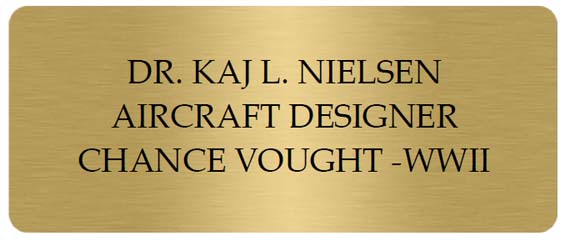
RESERVED
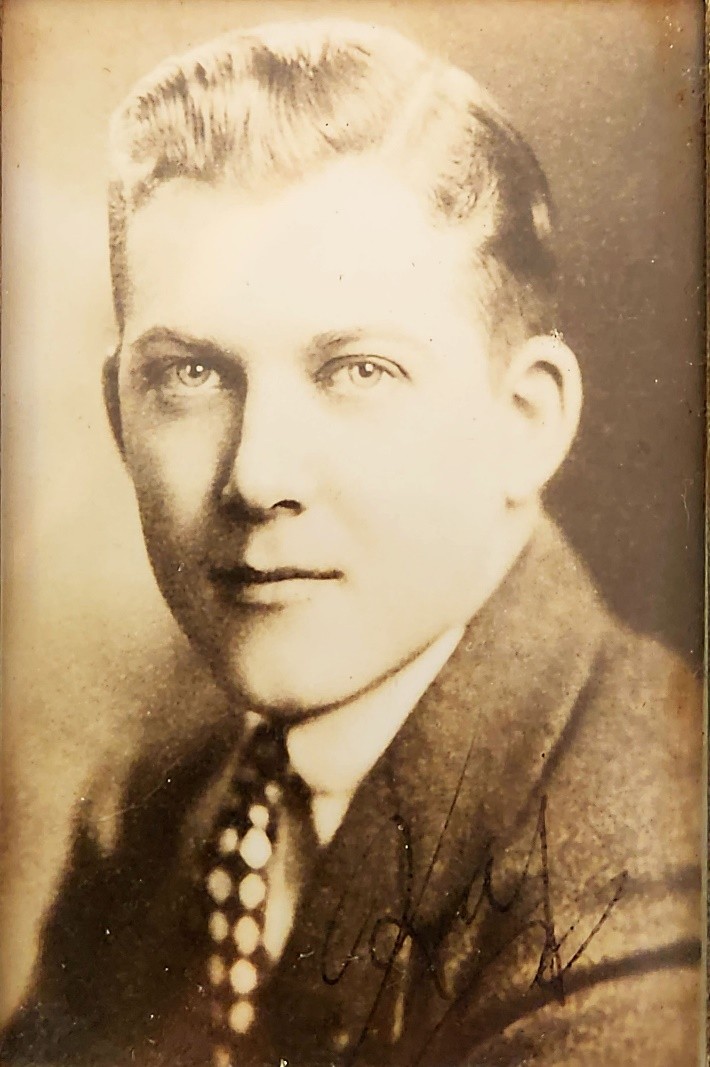
Kaj L. Nielsen was born in Nyker, Bornholm, Denmark on December 3, 1914. He immigrated to America with his mother and brother when he was a teenager. Not knowing any English, Kaj excelled in mathematics - after all 2+2 is 4 in any language. Kaj graduated from Roger City High School (Michigan) and went on to the University of Michigan, graduating Phi Beta Kappa, with a degree in Mathematics. Kaj then got his Master’s degree at Syracuse, a Ph.D. at the University of Illinois, and was a Carnegie, Post Doctorate Research fellow in Mathematics - Mechanics at Brown University.
When the war broke out, he worked briefly at Woodland Industries and Pratt and Whitney. Then at the age of 29, Kaj moved to Chance Vought Aircraft in Connecticut, serving as an Analytic Project Engineer. He helped calculate and refine the shape and angle of the curve in the wing on the F4U Corsair, contributed to other advancements of the aircraft’s design on later models, and designed experimental aircraft.
While at Chance Vought, Kaj would walk out to the catwalk and overlook the assembly line of the Corsair. He once said that he would go down to the production line to watch the details of the assembly on the planes. He probably watched Rosalind Palmer (Walker), who as a young woman was employed at that plant as a riveter. Rosie inspired the creation of "Rosie the Riveter,” a song about civilian women employed in the war industry. There is no evidence the two ever met.
Kaj was the designer for the Vought XF5U “Flying Pancake” (also known as V-173) (Vought XF5U - Wikipedia). It was an experimental military aircraft and only two were built. Since the war ended, this aircraft was never put into production. One remains in the Frontiers of Flight Museum outside Dallas, Texas. The complete set of Kaj’s drawings with all the mathematical calculations for this aircraft are at the University of Texas-Dallas Archives and available for research.
On the day of the surrender signing on the USS Missouri in Tokyo Bay, Kaj was on the catwalk at the plant overseeing an empty assembly line. All the workers had packed up were going home to the Midwest and wherever they came from. The war was over, and production stopped.
Dr. Kaj L. Nielsen died on February 21,1992. Tom Mutz died 16 days earlier on Feb 5, 1992. Kaj had a distinguished career in research and development and academia. Author of 15 mathematical books, numerous mathematical papers, and owner of various mathematical Patents. Including a Patent for the Three-dimensional and Spherical ruler. Kaj spent his later years as the Head of the Mathematical Sciences Department at Butler University in Indianapolis, Indiana. He was awarded Outstanding Educator of America in 1975. He retired as Professor Emeritus of Mathematics, with a scholarship named after him. Kaj and Carlene were both Life Masters in American Contract Bridge League. Kaj was survived by his wife of 49 years, two daughters and one granddaughter.
Donor: Dr. Janice A. Nielsen
SEAT A-11
RESERVED
SEAT A-12
RESERVED
SEAT A-13
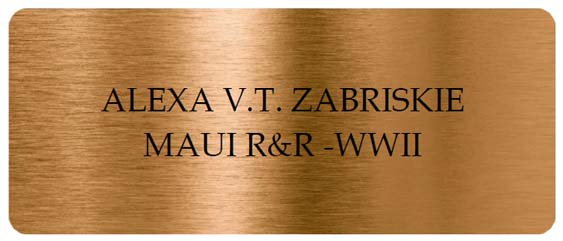
RESERVED
In memory of Alexa von Tempsky ZaBriskie, who provided needed comfort to thousands of officers and enlisted servicemen from 1941-1945. She was the recipient of the Asiatic-Pacific Area Theater Ribbon authorized by Admiral J.H. Towers.
Donor: Ms. Deborah vonTempsky
SEAT A-14
RESERVED
SEAT A-15
RESERVED
SEAT A-16
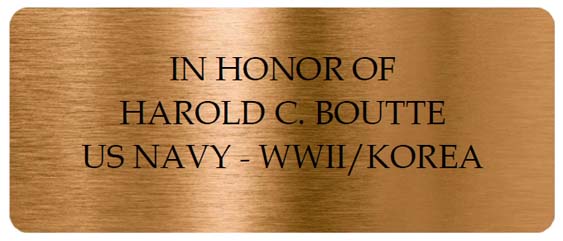
RESERVED
Donor: Michael and Ying-Chao Boutte
ALL SEAT OF HONOR TRIBUTES INCLUDE:
- Finish Plaque with up to 3 lines of inscription (limit of 20 characters per line)
- Ability to select seat (available on a first-come, first-served basis)
- Tribute permanently affixed to the back of your selected seat
- Recognition on website and inside theater
- Invitations to Museum events
- Subscription to NOTAM, the Museum’s quarterly newsletter
Once you’ve completed the Seats of Honor order form and payment, our team will be in touch to finalize your plaque design and confirm placement of your plaque on your selected seat. Should you have any questions, please reach out to Ms. Woo Ri Kim, Director of Development at [email protected] or 808-824-3505.
